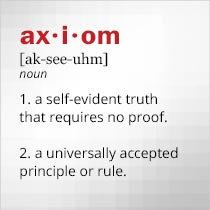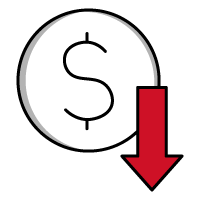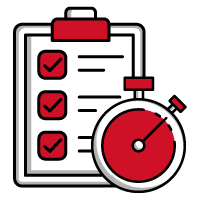Audio Measurements Lead to Higher Fidelity
June 05, 2017
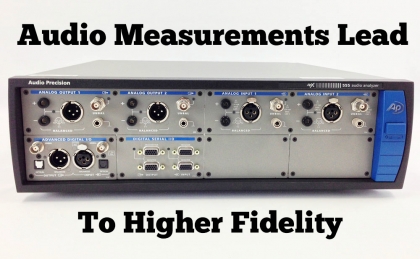 |
Audio circuits and transducers can be found in many modern electronic devices, such as smart phones, not to mention home and professional audio systems and sound equipment. High fidelity can be achieved through thoughtful design and well-chosen components, but it also requires proper testing to verify performance. Audio signals are produced by analog and digital circuits, although one set of performance parameters can serve as the basis for measurements on all kinds of audio circuits and devices, to determine if a device under test (DUT) is truly high fidelity.
Audio frequencies lie within the range of human hearing, typically 20 Hz to 20 kHz, but human hearing is more sensitive to some frequencies than others and is not a good tool for evaluating the audio quality of a DUT. For that reason, audio measurements should always be made with test equipment designed for that purpose, whether those measurements are part of a design process, for maintenance or troubleshooting, or part of production-line testing.
Audio Measurements
Measurements of audio quality serve to reveal the effects of a DUT on audio signals passing through it. These include testing for a DUT’s frequency response, gain, signal-to-noise ratio (SNR), harmonic distortion, intermodulation distortion (IMD), total harmonic distortion plus noise (THD + N), crosstalk between channels, and changes in phase or amplitude between channels in a multichannel DUT.
In addition, an audio DUT’s dynamic range refers to the difference in dB between the output level with no input signal (essentially its noise level) and the output level with an input signal, such as a sine wave, to achieve the maximum output power for a given distortion level. Noise usually starts with a DUT’s power supply, from power-line signals that enter a DUT’s operating frequency range through induction such as from an improperly regulated power supply. Such low-frequency noise is often referred to as hum, whereas higher-frequency noise is usually termed white noise. In some cases, such as a stereo amplifier or receiver, additional performance parameters, such as output power, may require testing under different conditions of gain and input power level.
A DUT capable of high fidelity will exhibit excellent linearity throughout its frequency range, revealed in measurements as amplitude response that is typically better than ±1 dB across the operating frequency range per channel and within ±1 dB or better from channel to channel in a stereo or multichannel DUT. Similarly, measurements of phase response in a high-fidelity DUT will exhibit minimal variations in phase with frequency per channel and from channel to channel.
Suitable Test Instruments
When testing audio equipment whether for consumer, commercial, professional, or even military users, the performance levels of candidate test instruments should far exceed the anticipated performance levels of the intended DUT. Quite simply, if measuring SNR or dynamic range, for example, it is not possible to accurate characterize a DUT if the noise levels of the audio analyzer exceed those of the DUT. Performance levels for a DUT, with suitable margins, should set the minimum performance requirements for any audio analyzer under consideration. By adding large-enough margins, it is possible to ensure that an audio analyzer will provide the performance levels for years to come, as audio DUT performance levels improve with design enhancements.
At one time, separate test instruments were needed for generating test tones, such as sinewaves or distortion waveforms, and for measuring the responses of a DUT to those test tones. But modern audio test solutions such as the Audio Precision SYS-2722 audio analyzer pack all the measurement capability needed for accurate, high-performance audio testing in a single package. The Audio Precision SYS-2722 contains a sine wave generator with a frequency range of 10 Hz to 204 kHz that can emulate fundamental and harmonic audio tones, and a broadband signal analyzer with frequency range of 10 Hz to 500 kHz to capture all of a DUT’s higher-order harmonics and distortion.
The Audio Precision SYS-2722 has long been a measurement standard for audio testing, with amplitude accuracy of ±0.06 dB and amplitude flatness of ±0.008 dB from 20 Hz to 20 kHz and frequency accuracy of 2 ppm. It offers THD + N of -112 dB for a 1-kHz bandwidth and can generate the distortion waveforms needed for repeatable IMD testing, including CCIF, DFD, DIM, DIN, SMPTE, and TIM waveforms.
In spite of the gaudy performance levels, however, the Audio Precision SYS-2722 is no longer the reference standard for audio analyzers, a designation that belongs to the Audio Precision APX555 audio analyzer. The Audio Precision APX555 is a two-channel audio tester with both analog and digital test signal sources and a highly sensitive, wideband, wide-dynamic-range analyzer. It features a modular configuration, with the flexibility of software-drive programmability, to quickly adapt to any audio measurement requirements, whether on the test bench or on the production floor.
Additional Audio Analyzers
Audio analyzers are available from a number of trusted suppliers, including the HP/Agilent/Keysight 8903B audio analyzer, Audio Precision APX585, Audio Precision APX586, and the Rohde and Schwarz UPL audio analyzer. Each combines test signal sources with analyzers and each provides cost-effective performance for different applications, depending upon requirements. For example, the Bruel & Kjaer 2012 is well equipped for the electro-mechanical side of audio testing, for measurements on audio transducers, such as speakers and microphones. It has a frequency range of 1 Hz to 40 kHz, two built-in sinewave generators, and an analyzer THD + N of -80 dB. Full data sheets are available on each of these audio analyzers and more, on axiomtest.com.
Axiom Test Equipment is your source for electronic test and measurement equipment rentals, sales, repair, and trade-in to support your specific test & measurement needs. If interested in help selecting test equipment for your project, contact Axiom Test Equipment’s sales department at sales@axiomtest.com, or call 760-806-6600.
Back to BLOG


